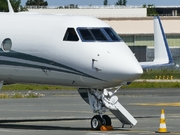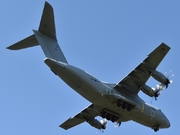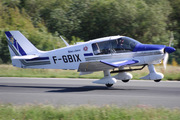Dépêches
Fitch Affirms Southwest Airlines at 'BBB'; Outlook Stable
Dépèche transmise le 27 septembre 2011 par Business Wire
CHICAGO--(BUSINESS WIRE)--Fitch Ratings has affirmed the debt ratings of Southwest Airlines Co. (NYSE: LUV) as follows.
--Issuer Default Rating (IDR) at 'BBB';
--Senior Unsecured Debt at 'BBB';
--$800 million Unsecured Revolving Credit Facility expiring 2016 at 'BBB';
--Secured Term Loans due 2019 and 2020 at 'BBB+'.
The Rating Outlook for LUV is Stable.
The ratings affirmation follows the closing of the AirTran Holdings, Inc. (AirTran) acquisition and a continuation of generally positive demand and revenue trends in a still difficult 2011 industry operating environment. Heavy fuel cost pressure, while abating, still represents a significant drag on the airline's earnings and cash flow generation this year, and prospects for a continuation of solid revenue per available seat mile (RASM) growth are uncertain in light of the weakening economic outlook.
In spite of industry operating risks and growing concerns over a recession, LUV appears to be on track to lower debt levels meaningfully over the next year as scheduled maturities are funded out of positive free cash flow (FCF) and excess liquidity on the balance sheet. The carrier faced current maturities of $990 million as of June 30. Consistent with recent management statements, Fitch expects these maturities to be funded with little or no additional borrowing over the next year.
Fitch expects LUV to generate positive FCF in excess of $400 million in 2011. FCF generation may come under pressure next year, especially if RASM growth lags in a recessionary scenario. In that event, fuel cost pressure may continue to ease as global energy demand growth slows. However, LUV and its U.S. airline competitors could find it more difficult to push through fare increases in a softer air travel demand environment.
Fleet-related capital spending will rise next year as the carrier takes 33 new Boeing narrowbodies to replace retiring B737-300 aircraft. While management has guided to flat or declining capacity for 2012, Fitch believes that capex next year will likely exceed the projected 2011 total of approximately $900 million. Higher levels of capex may persist over the next few years as LUV replaces older and less fuel efficient aircraft with new B737-800s and potentially a re-engined B737 variant late in the decade.
In addition to the uncertain operating outlook, debt reduction progress over the next year will be influenced by LUV's commitment to share buybacks. The announcement of a $500 million share repurchase authorization in August represents a risk factor that could impact debt balances and liquidity moving into 2012. Through Sept. 9, LUV had allocated $163 million to share buybacks under the current authorization.
In a slow RASM growth scenario for 2012, LUV is in a position to deliver modestly positive FCF to support debt reduction. A continuation of industry capacity discipline and stable or falling jet fuel prices next year are necessary if LUV is to report improving cash flow against a backdrop of negligible or negative U.S. GDP growth over the next few quarters.
Continued progress toward full integration of the AirTran work force and fleet over the next year should put the combined carrier in a position to deliver network-driven revenue benefits that exceed any increased costs resulting from the AirTran acquisition, including the expected step-up in AirTran employee labor costs as single labor contracts are negotiated. Management has indicated that it believes the AirTran acquisition can drive more than $400 million in annual net benefits by 2013.
The key change in the U.S. airline industry operating environment over the past year has been the sharp spike in energy prices that drove spot jet fuel to over $3.30 per gallon this spring. Prices of crude oil and jet fuel have moderated somewhat in recent weeks, but remain high and volatile relative to expectations earlier in the year. LUV and its principal competitors paid more than 30% higher average fuel prices in 2Q'11.
While the outlook for fuel costs has improved somewhat with the pull-back in Brent and WTI crude oil prices since July, refining margins remain high and declines in jet fuel prices haven't kept pace with crude. LUV's fuel hedge book is deep, with coverage extending as far out as 2015. In recent weeks the carrier has modified its fuel derivative position somewhat by restructuring some of its catastrophic coverage above $100 per barrel of WTI, while eliminating the vast majority of floors that could have liquidity implications if crude prices drop sharply.
Recent turmoil in the financial markets and worries over Europe has darkened the outlook for consumer and business spending, and the fourth quarter air travel demand outlook is uncertain. Business travel demand, however, does seem to be holding up reasonably well to date, as an early September industry fare hike for non-advanced purchase fares stuck in the market.
LUV's unrestricted cash and investments balance totaled $4.4 billion at June 30 compared with total combined LUV and AirTran debt balances of $4.2 billion. This amount was supplemented by full availability on its $800 million unsecured revolving credit facility that matures in April 2016. LUV's liquidity position is strong, providing it with substantial flexibility to meet upcoming bullet maturities ($400 million in December and $385 million in March 2012) out of cash balances and FCF.
Most of the pre-AirTran acquisition LUV fleet is unencumbered, with an estimated total unencumbered asset balance in excess of $7 billion. AirTran's fleet was entirely financed via debt and leases as of the date of the acquisition.
A positive rating action is unlikely over the next one to two years in light of LUV's elevated post-acquisition debt levels and the need to fund somewhat higher aircraft capital commitments out of FCF.
A revision of the Outlook to Negative or a downgrade to 'BBB-' is possible over the next one to two years if the airline's cash flow profile worsens significantly, potentially postponing planned debt reduction. A combination of weak air travel demand and declining unit revenue in a recessionary scenario could lead to a negative rating action. In addition, average jet fuel prices of 3.50 or higher in 2012 and 2013 could erode operating cash flow and put more pressure on LUV to defer debt reduction. A continuation of share repurchase activity beyond the current $500 million authorization is another risk factor that could influence ratings negatively.
Applicable Criteria and Related Research
--Corporate Rating Methodology (Aug. 12, 2011)
Applicable Criteria and Related Research:
Corporate Rating Methodology
http://www.fitchratings.com/creditdesk/reports/report_frame.cfm?rpt_id=647229
ALL FITCH CREDIT RATINGS ARE SUBJECT TO CERTAIN LIMITATIONS AND DISCLAIMERS. PLEASE READ THESE LIMITATIONS AND DISCLAIMERS BY FOLLOWING THIS LINK: HTTP://FITCHRATINGS.COM/UNDERSTANDINGCREDITRATINGS. IN ADDITION, RATING DEFINITIONS AND THE TERMS OF USE OF SUCH RATINGS ARE AVAILABLE ON THE AGENCY'S PUBLIC WEBSITE 'WWW.FITCHRATINGS.COM'. PUBLISHED RATINGS, CRITERIA AND METHODOLOGIES ARE AVAILABLE FROM THIS SITE AT ALL TIMES. FITCH'S CODE OF CONDUCT, CONFIDENTIALITY, CONFLICTS OF INTEREST, AFFILIATE FIREWALL, COMPLIANCE AND OTHER RELEVANT POLICIES AND PROCEDURES ARE ALSO AVAILABLE FROM THE 'CODE OF CONDUCT' SECTION OF THIS SITE.
- 24/04Ibis Styles London Heathrow : l'hôtel géré par un passionné d'aviation pour les passionnés d'aviation (photos + vidéos)
- 23/04 SkyUp renouvelle son partenariat avec Wizz Air
- 23/04 Play : résultats de mars 2024
- 23/04 Les garde-côtes japonais commande trois Airbus H225 supplémentaires
- 23/04 Vueling et Make-A-Wish France signent un partenariat
- 23/04 TUI annonce ses destinations au départ de Deauville pour l'été 2024.
- 23/04 Twin Jet renforce son programme de vols sur la ligne Toulouse/Rennes
- 23/04 Norse Atlantic Airways : résultats du mois de mars 2024
- 23/04 Volotea renforce son offre entre Lille et le Maroc
- 22/04 Finnair a dévoilé son programme de vol pour les saisons hiver 2024 et été 2025
- 22/04 Qatar Airways annonce le lancement de vols à destination de Kinshasa
- 22/04 Vietnam Airlines et CAE prolongent leur accord
- 22/04 Mermoz Academy de Tours commande des Tecnam P-Mentor
- 22/04 Transavia France reçoit son 2e Airbus A320neo
- 20/04 Friedrichshafen 2024 : Blackwing présente un nouveau modèle de son BW650RG
- 20/04 Friedrichshafen 2024 : JMB Aircraft présente son Phoenix
- 19/04 Friedrichshafen 2024 : le projet "Fly To The North"
- 19/04 Friedrichshafen 2024 : Aura Aero présente pour la première fois ses trois appareils
- 19/04 Friedrichshafen 2024 : Duc Hélices présente son hélice Tiger-3
- 19/04 Friedrichshafen 2024 : Splash-in Aviation expose son Pétrel X







